project cost estimation course
A Project Cost Estimation Course is a specialized training program designed to teach individuals and project managers how to accurately predict and manage the financial costs of a project. It equips learners with the knowledge, tools, and techniques required to assess costs, allocate resources efficiently, and minimize financial risks throughout the project lifecycle. This course is essential for improving budgeting skills and ensuring the success of projects across various industries.
What is Project Cost Estimation?
Project cost estimation is the process of forecasting the total financial resources required to complete a project. It involves identifying all the costs associated with labor, materials, equipment, and overhead. The goal is to prepare a realistic budget that aligns with the project’s scope and timeline. Accurate estimation helps in planning, decision-making, and reducing the risk of overspending.
Why Take a Project Cost Estimation Course?
Enrolling in a project cost estimation course helps professionals gain practical skills in estimating, budgeting, and cost control. The course is beneficial for:
Project Managers who want to enhance cost control measures
Engineers and Construction Managers working on large-scale projects
Business Analysts and Financial Planners involved in budgeting
Students pursuing careers in project management or finance
Key Components of a Project Cost Estimation Course
A comprehensive course in project cost estimation will often include the following modules:
Introduction to Project Budgeting: Basics of project financial planning
Types of Estimates: Rough order of magnitude, detailed estimates, etc.
Cost Estimation Techniques: Analogous, parametric, three-point estimation
Tools & Software: Use of Excel, MS Project, Primavera, or specialized cost estimation tools
Case Studies & Real-World Examples: Hands-on projects to apply estimation methods
Risk & Contingency Planning: Accounting for uncertainty in estimates
Overview
Learners accessing this standard will be working as a leader in the context of a small project / sub-project involving few resources and having a limited impact on stakeholders and the environment or working as a contributing team member on a medium to large project when not a leader.
Description
Learners accessing this standard will be working as a leader in the context of a small project / sub-project involving few resources and having a limited impact on stakeholders and the environment or working as a contributing team member on a medium to large project when not a leader. These projects may be technical projects, business projects or developmental projects and will cut across a range of economic sectors. This standard will also add value to learners who are running their own businesses and recognise that project management forms an integral component of any business. The qualifying learner is capable of identifying elements and resources to be costed through interpreting the project scope statement, work breakdown structure and other project data. Participating in the preparation and production of a cost budget. Contributing to the monitoring and controlling of cost budget performance by maintaining records and communicating.
Course Content
Unit 1: Identify elements and resources to be costed through interpreting the project scope statement, work breakdown structure and other project data
- The work elements are identified and extracted from the data
- Cost types (elements) are identified and agreed with financial and/or project management authorities
- Unit costs to be used for cost estimating are agreed upon with the relevant authority
- The resource requirements for work elements are determined in terms of type, quantity, and unit cost, and documented in the agreed format
Unit 2: Participate in the preparation and production of a cost budget
- The elements of cost for each work element/package are estimated using agreed rules and procedures
- A cost budget is documented in the agreed format and within agreed time frames
- The underlying assumptions of the estimate are explained, motivated, and documented in the agreed format
- Approval is obtained for the budget from higher authority in accordance with established standards and procedures
- Cost budget figures are balanced and correct in accordance with standard accounting practices
Unit 3: Contribute to the monitoring and controlling of cost budget performance by maintaining records and communicating
- The cost budget is communicated in a manner that ensures all relevant parties are clear on its contents
- Actual costs against the budget elements are obtained and records are updated correctly
- Deviations of actual against budgeted costs are identified and communicated to higher authority
- Opportunities for corrective action or improvement are identified and communicated to relevant individuals/teams
- Financial records are maintained according to agreed standards and procedures
Accreditation
- Non-accredited: Short course only
- Duration: 1h 55m
- Delivery: Classroom/Online/Blended
- Access Period: 12 Months

